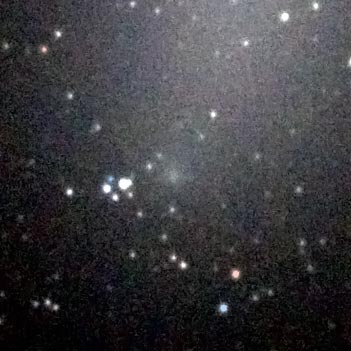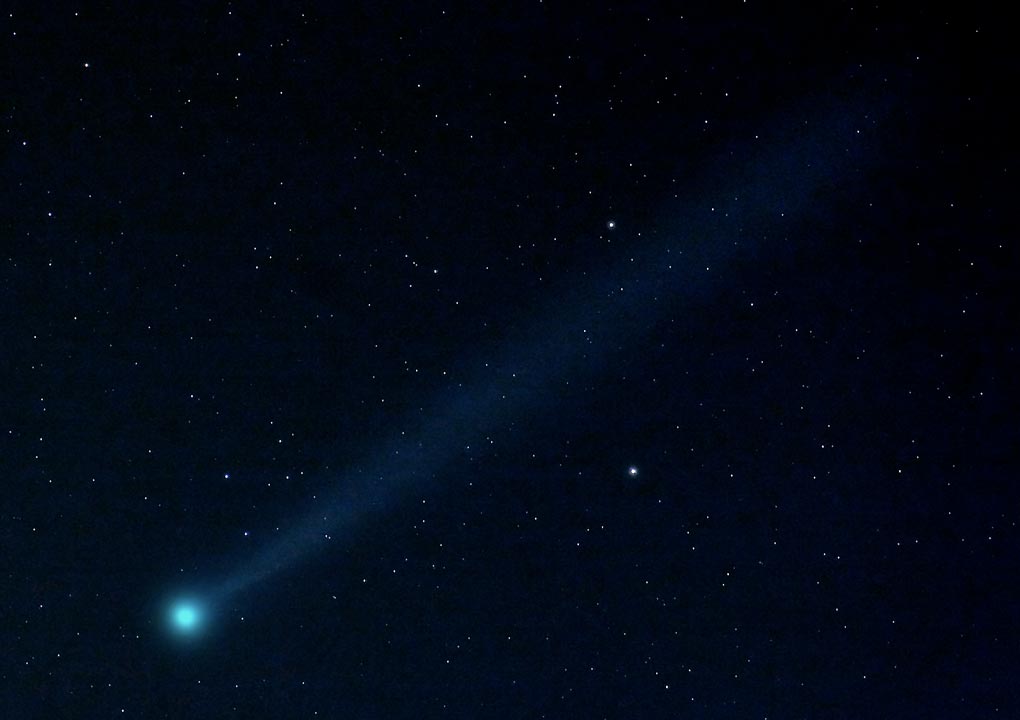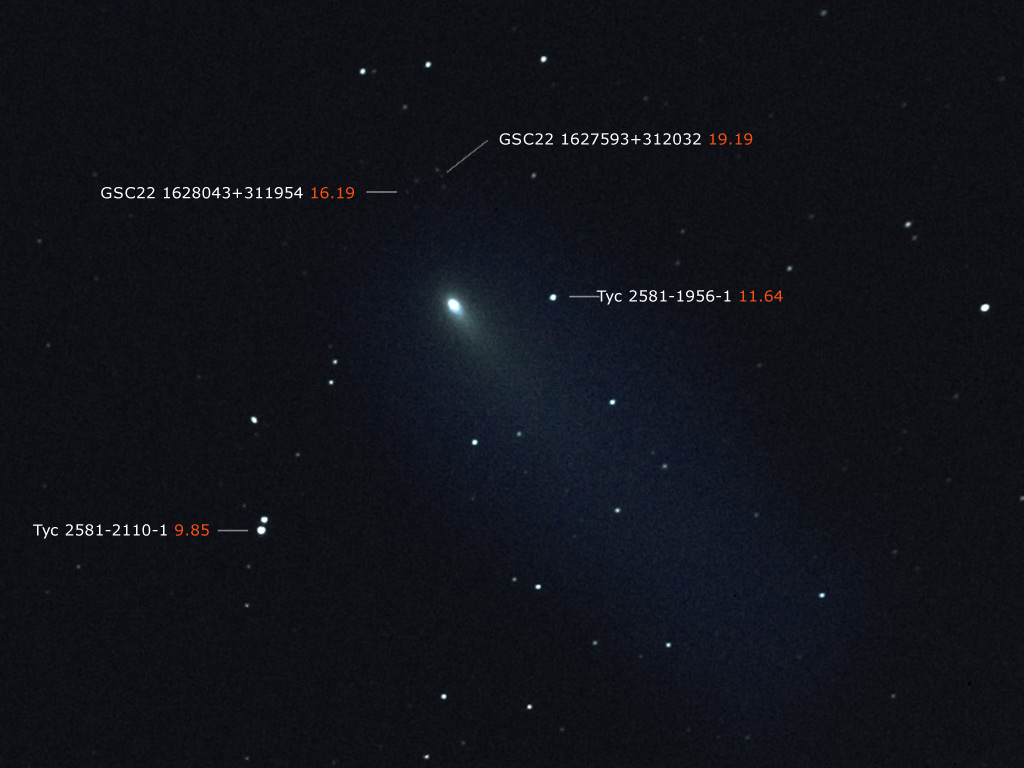Many comets (more correctly, their comas and tails) are green due to the presence of cyanogen gas (CN) and C2, or diatomic carbon. Both of these molecules emit green-blue light when subjected to sunlight. CN is a toxic gas, and some scientifically illiterate people (but not you and me) believe that if the Earth were to pass through the tail of a comet we would all be poisoned. Not so. The Earth passes through comet tails very often, yet we’re alive. It is our atmosphere that protects us from comet tails and cosmic rays. C2 is found not only in comet tails; it is the compound that emits blue light in candle flames.
Thanks to my cyberbuddy, retired chemist Perry Holcomb, for reminding me to mention CN and C2 in this caption.
I would like to say that I timed this photo of Comet Lulin so as to capture the distant spiral galaxy NGC 5890, and the asteroid Proserpina, in close proximity—but I did no such thing. The presence of the other objects is pure serendipity and I found them while inspecting the photo. (Place your cursor over the photo to identify these objects and some representative stellar magnitudes.) The broken blue line represents the orientation but not the location of the ecliptic plane. At the time of the photograph both the comet and asteroid Proserpina were moving parallel to the ecliptic. If we were to photograph a sufficient number of asteroids and comets at intervals to plot their movement we would note that most asteroids orbit in the plane of the ecliptic, while comets are less restricted, as their orbits are determined by random events, some of them relatively recent in the history of our Solar System, and not by the gravitational constraints that were in place at the time of the formation of our Solar System and that gave our Solar System the appearance it has today. It is the motion of asteroids against the background stars that leads to their discovery. Comets may also be discovered in this way if they appear star-like with little or no coma. Proserpina was discovered in 1853 by the German astronomer Karl Theodor Robert Luther. The orientation of this photo is naked-eye and we are looking at the constellation Libra.
This is a combination of 10 two-minute exposures made between 1024 GMT and 1045 GMT (0524-0545 EST) on 30 January, 2009. The comet nucleus is elongated because I guided on the stars and the comet's motion over 20 minutes was recorded. I used high-contrast processing to reveal the ghost of a tail and an anti-tail extending from the 2:00 and 8:00 positions.


